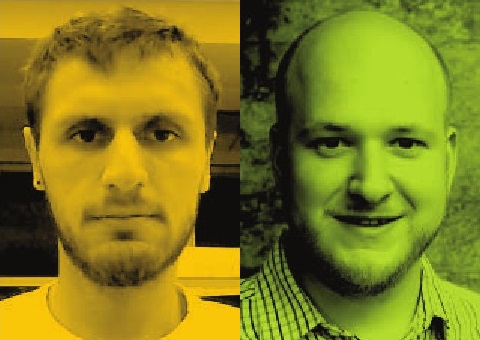SECTION: Features
This article pilots ChatGPT in tackling the most challenging part of science learning and found it successful in automation of assessment development, grading, learning guidance, and recommendation of learning materials.
By Xiaoming Zhai, April 2023
PDF | HTML | In the Digital Library
ChatGPT has taken the world by storm, with educators reeling from its implication for curricula and assessment. This article examines how ChatGPT resembles earlier technologies and predicts how we can expect it to impact education going forward.
By David A. Joyner, April 2023
PDF | HTML | In the Digital Library
SECTION: Features
The best way to stop a bad chatbot spreading misinformation may be a good chatbot providing facts. But how can we deploy these bots on short notice without compromising quality and user privacy?
By Fiete Lüer, September 2020
PDF | HTML | In the Digital Library

This article explores the areas of bias in natural language processing, from the tools that are used to analyze the data to the fundamental theories in the field. It delves deeper into the very idea that the data that is analyzed (language) itself shapes human perception of reality, and evolves over time.
By Talia Kohen, April 2019
PDF | HTML | In the Digital Library

SECTION: Features
Natural language understanding is as old as computing itself, but recent advances in machine learning and the rising demand of natural-language interfaces make it a promising time to once again tackle the long-standing challenge.
By Percy Liang, October 2014
PDF | HTML | In the Digital Library

Technology has made language learning a more interactive and enjoyable experience, but it has never been smart enough to replace human tutors. However, the latest advances in automated grammatical error correction open up new horizons. Could software ever replace our language teachers?
By Mariano Felice, Zheng Yuan, October 2014
PDF | HTML | In the Digital Library

How we can enable users to transmit text to mobile and ubiquitous computer systems as quickly and as accurately as possible.
By Per Ola Kristensson, October 2014
PDF | HTML | In the Digital Library

Far from its beginnings as symbols pressed into clay tablets, Ancient Sumerian is now being digitized and shared through cutting edge semantic web technologies.
By Terhi Nurmikko-Fuller, October 2014
PDF | HTML | In the Digital Library

Knowing who's influential can help when planning political campaigns, advertising strategies, or even combating terrorism; and now research into influence detection promises to automate such detection.
By Sara Rosenthal, October 2014
PDF | HTML | In the Digital Library

Wouldn't it be great if we could simply talk to our technical devices instead of relying on cumbersome displays and keyboards to convey what we want?
By Pierre Lison, Raveesh Meena, October 2014
PDF | HTML | In the Digital Library

How to detect the switch between a standard and a dialectal form of a language in written text and why this is important for natural language processing tasks.
By Heba Elfardy, Mohamed Al-Badrashiny, Mona Diab, October 2014
PDF | HTML | In the Digital Library

Babbel's Director of Didactics, Miriam Plieninger, weighs in on how mobile apps are rapidly changing the way we approach language learning.
By Daniel Bauer, Billy Rathje, October 2014
PDF | HTML | In the Digital Library

SECTION: Features
Recent advances in natural language processing bring together rich representations and scalable machine learning algorithms.
By Noah A. Smith, André F. T. Martins, March 2013
PDF | HTML | In the Digital Library

An introduction to designing algorithms for the MapReduce framework for parallel processing of big data.
By Jeffrey D. Ullman, September 2012
PDF | HTML | In the Digital Library

Computational semantics has become an interesting and important branch of computational linguistics. Born from the fusion of formal semantics and computer science, it is concerned with the automated processing of meaning associated with natural language expressions [2]. Systems of semantic representation, hereafter referred to as semantic formalisms, exist to describe meaning underlying natural language expressions. To date, several formalisms have been defined by researchers from a number of diverse disciplines including philosophy, logic, psychology and linguistics. These formalisms have a number of different applications in the realm of computer science. For example, in machine translation a sentence could be parsed and translated into a series of semantic expressions, which could then be used to generate an utterance with the same meaning in a different language [14]. This paper presents two existing formalisms and examines their user-friendliness. Additionally, a new form of semantic representation is proposed with wide coverage and user-friendliness suitable for a computational linguist.
By Craig Thomas, December 2008
PDF | HTML | In the Digital Library
Prosodic phrasing is the means by which speakers of any given language break up an utterance into meaningful chunks. The term "prosody" itself refers to the tune or intonation of an utterance, and therefore prosodic phrases literally signal the end of one tune and the beginning of another. This study uses phrase break annotations in the Aix-MARSEC corpus of spoken English as a "gold standard" for measuring the degree of correspondence between prosodic phrases and the discrete syntactic grouping of prepositional phrases, where the latter is defined via a chunk parsing rule using nltk_lite's regular expression chunk parser.
A three-way comparison is also introduced between the "gold standard" chunk parsing rule and human judgment in the form of intuitive predictions about phrasing. Results show that even with a discrete syntactic grouping and a small sample of text, problems may arise for this rule-based method due to uncategorical behavior in parts of speech. Lack of correspondence between intuitive prosodic phrases and corpus annotations highlights the optional nature of certain boundary types. Finally, there are clear indications, supported by corpus annotations, that significant prosodic phrase boundaries occur within sentences and not just at full stops.
By Claire Brierley, Eric Atwell, December 2007
PDF | HTML | In the Digital Library


















